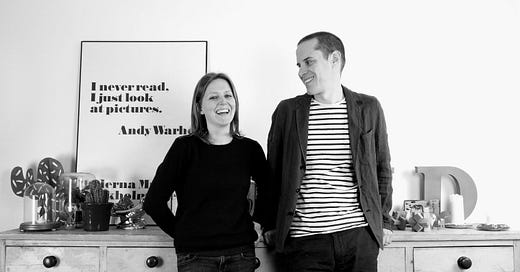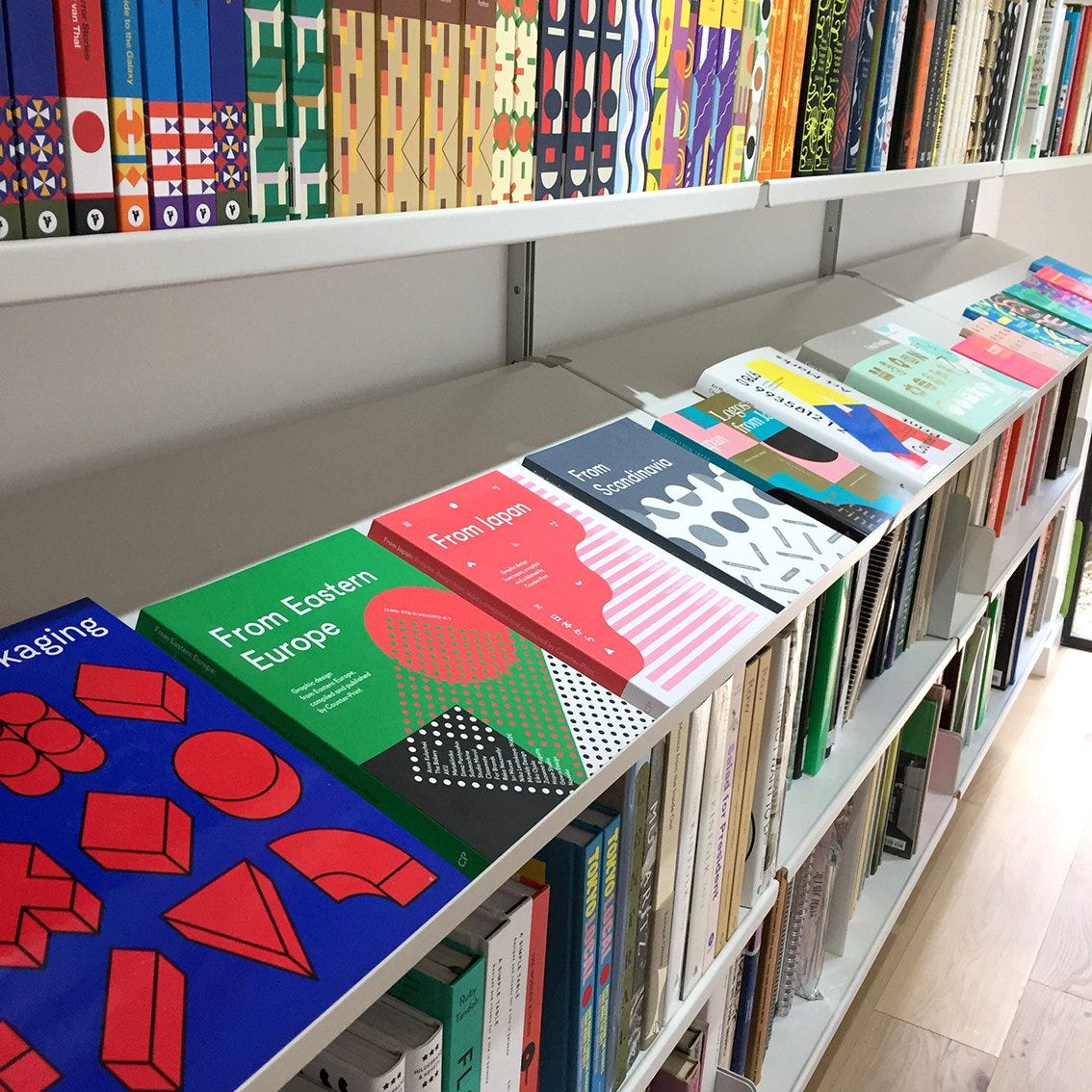A warm welcome to all new readers that joined us last week. The story of this issue is fascinating. A short teaser:
2008, foggy London...
Two design partners...
Ambitious enough to quit their jobs...
What’s their plan?
Selling vintage design books on the net!
Fighting Amazon, eBay, and others
What? Are they out of their minds?
This is the story of Counter-Print, one of the most trusted brands in the world of indie publications. As always, I will show you the real story behind the headlines and flashing lights! Most importantly, I will uncover what you can learn from it.
If this is your first time here, just enter your email in the box below, and I will reach your inbox every Monday with the most practical newsletter for artists and creators.
How it all started
It’s 2008. Designers Céline Leterme and Jon Dowling were taking old and out-of-print books that they had found in their travels and weekends to work. It was a love and a source of inspiration for them. But when they found that other colleagues wanted a copy, they thought, “Maybe there is something here!“
They started designing a very tiny online store and experimenting with it. Although it was the beginning of online shopping, books that they put on the store would have gone fast!
But that nagging voice in their head was like:
- That’s stupid!
- It’s not scalable.
- Forget about it.
About one year later, the online store was paying half their mortgage, but they still couldn’t call it anything close to a career!
They knew they wanted to run their own business. So they quit their day jobs and started to do freelancing. A bit later, they started a small design agency. During these times, they kept the online store as a side project. Jon said, “it was like a safety net for us”.
A couple of years into the game...
Around 2017, they slowly started publishing some of their own books, which they had been dreaming about for a long time. But this destroyed the whole balance of their business!
Between juggling clients’ projects and their own online store, they stopped for a moment to ask themselves this hard question:
What is the ONE THING that we can do and understand better than others? Where do we want to put all our effort?
They saw two paths in front of them:
Path A: Going with just the design agency. It was a traditional, examined, reliable model. They had already built a network of clients over the past 10 years.
Path B: Going down an unconventional path, risking all their networking, savings, and credentials for a niche market that might be crashed by so many big competitors; a market that is also under attack by the rise of digital books.
They chose path B, and Counter-Print officially was born.
Damn you, dreamers!
The world rewards courage and the internet rewards differentiation. Now Counter-Print, although a small company, is one of the trusted names in the world of online publication.
And they are not alone. It’s a global movement. In the future, we will see the rise of smaller, trusted brands in narrow and focused markets which are founded and operated by experts or creators, not businesspeople.
It’s a direct-marketing revolution, which cuts layers of distribution, customizes and personalizes products, and moves from the local to the global level.
What we can learn from them
Start small, start with side projects: It almost took 10 years for Céline and Jon to go all-in. A path to a creative business is usually not linear and requires sacrifice and enormous patience. Build your project up organically over time.
Staying agile and small is THE WAY: Not only did they start small, they intentionally stayed lean. Counter-Print is mostly run and managed by the partners themselves. Their house is also their office. Staying agile will help you to be flexible and versatile in an ever-changing market.
No niche is small now: The internet has removed the “middle man” and given us access to a global marketplace. Any “crazy” idea now only needs to reach a very tiny fraction of this market to thrive. Focusing on a narrow audience and market is the best competitive advantage of small companies. That’s how you can fight against giant forces. If I want a unique book on design and graphics, I won't search on Amazon. I will search for a publication that specializes in publishing design books.
Build trust, build respect: Do you remember last week's article? Don’t reach out for resources or collaborations unless you build something for yourself first. Now, young but sought-after artists like Malika Favre are excited to work with Counter-Print. Building a trusted brand has built an effective network for this publication that now, attracts the best talents and collaborators.
Start niche, expand later: Counter-Print started by selling only vintage design books. Later they started publishing their own books. Next, they turned into a hub for other design books, and started curating and selling books from other designers and publishers. Finally, they expanded the business to selling lifestyle, kids, and business books as well. Start small, then conquer the world!
How did they get so good at business? By doing it. No one is an expert at business from Day One. I’m sure they also made many mistakes and lost money and opportunities along the way. But that’s how you learn!
Be human, be personal: Last week I commented on one of their photos: “Post more behind the scenes photos please!” A couple of hours later, they posted two photos of their messy office and tagged me: “Some behind the scenes photos for Reza Bird”.
Good businesses are those who are managed by good humans -- By those who care about others.
That’s all for now, folks.
- Reza








